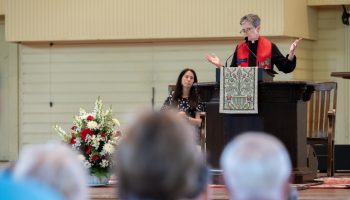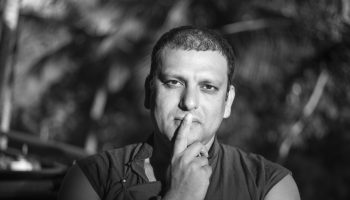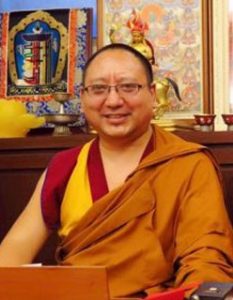
Week Three of the Mystic Heart Meditation program will be led by John Pulleyn, head of Zen training at Rochester Zen Center, Mateo Mortellaro, president of Snow Lion Dharma Work, and Khenpo Konchok Monlam, a head teacher at the Kagyu College in Dehra Dun, India.
Pulleyn will hold daily meditation sessions from 7:15 to 8 a.m. in the Presbyterian House Chapel, and from 12:30 to 1:55 p.m. Tuesday and Thursday, in the Hall of Missions.
Mortellaro will be covering the first half of the week with sessions from 8:15 to 9 a.m. Monday, Tuesday and Wednesday in the Presbyterian House Chapel, and from 4:45 to 5:30 p.m. Monday in the Hurlbut Sanctuary.
Monlam will have sessions from 8:15 to 9 a.m. Thursday and Friday in the Presbyterian House Chapel, and from 4:45 to 5:30 p.m. Wednesday in the Hurlbut Sanctuary.
Mystic Heart Meditation is a program run by the Department of Religion that provides opportunities for Chautauquans to study and practice self meditation, contemplation and related disciplines drawn from the world’s religious or wisdom traditions.
Pulleyn first came across Zen Buddhism on a hike with friends, and has now been practicing it for over 40 years. With his years of experience and working with the late Roshi Philip Kapleau, the founder of the Rochester Zen Center and author of Three Pillars of Zen, and Roshi Kapleau’s successor, Roshi Bodhin Kjolhede, he will lead the Japanese Zen Buddhist meditation at the Institution.
Meditation in Zen means keeping a “don’t-know” mind when bowing, chanting and sitting Zen. This is formal Zen practice. And when doing something, just do it. When driving, just drive; when eating, just eat; when working, just work.
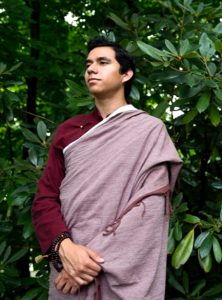
After graduating from Oberlin College with a Bachelor of Arts in history, Pulleyn joined the Zen Center’s staff in 1968. He is currently a senior instructor at the center as well as head of training and assistant to the Abbot. He has led sesshins (meditation retreats) in Rochester, and for an affiliate group in Madison, Wisconsin.
“The wonderful thing about Zen Buddhism, and I think about almost all forms of Buddhism, is that they’re so tolerant of other paths,” Pulleyn told the Daily in 2018. “You hear a lot of people saying all these different paths lead to the same mountaintop, metaphorically speaking. I think that’s a strong thread in Buddhism — this understanding that what’s important isn’t the particular path you take, but your sincerity and your determination and sticking to it.”
Mortellaro is a non-sectarian Tibetan Buddhist practitioner in the Gelugpa tradition. He began his Buddhist studies at home as a young boy, reading his mother’s books on Buddhist philosophy.
Tibetan Buddhism inherited many of the traditions of late Indian Buddhism, including a strong emphasis on monasticism (Tibet was once home to the largest Buddhist monasteries in the world), a sophisticated scholastic philosophy, and elaborate forms of tantric practice. At the same time, Tibet continued its tradition of powerful popular cults, incorporating a wide variety of local deities into the already burgeoning Buddhist pantheon.
Eventually, Mortellaro found himself learning formal meditation at the Rochester Zen Center with the guidance of his grandmother, who is an avid Zen Buddhist practitioner.
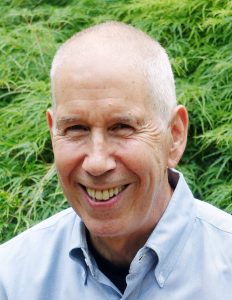
While at the Rochester Zen Center, though, he began to study some of the major Tibetan texts and sought out a Tibetan Center to practice at. He then became a member of the White Lotus Buddhist Center in Rochester — where he met Monlam — and has been training in the Drikung Kagyu tradition ever since.
Monlam, who will also be representing Tibetan Buddhism, is a lama and one of the head teachers at Kagyu College in Dehradun, India, where he has taught for 11 years.
Born in Kham (Eastern Tibet), Monlam became a monk at the age of 12 after requesting his parents’ permission to become ordained. He has received many teachings and empowerments directly from one of his most well-known teachers — the 14th Dalai Lama. His main areas of training are Buddhist philosophy, Madhyamika and Tibetan grammar.



